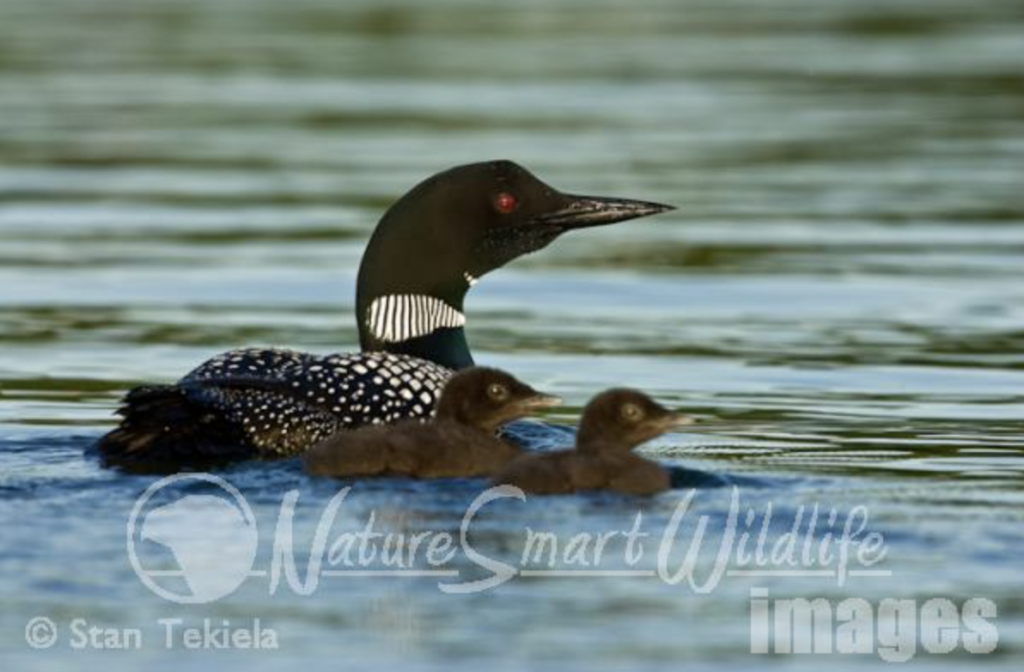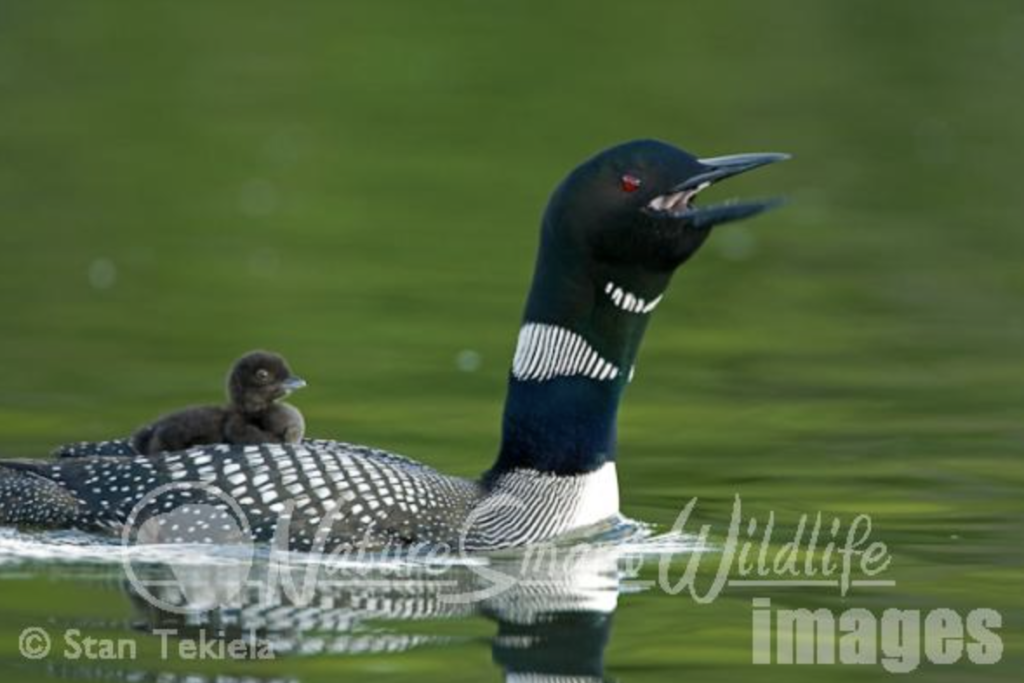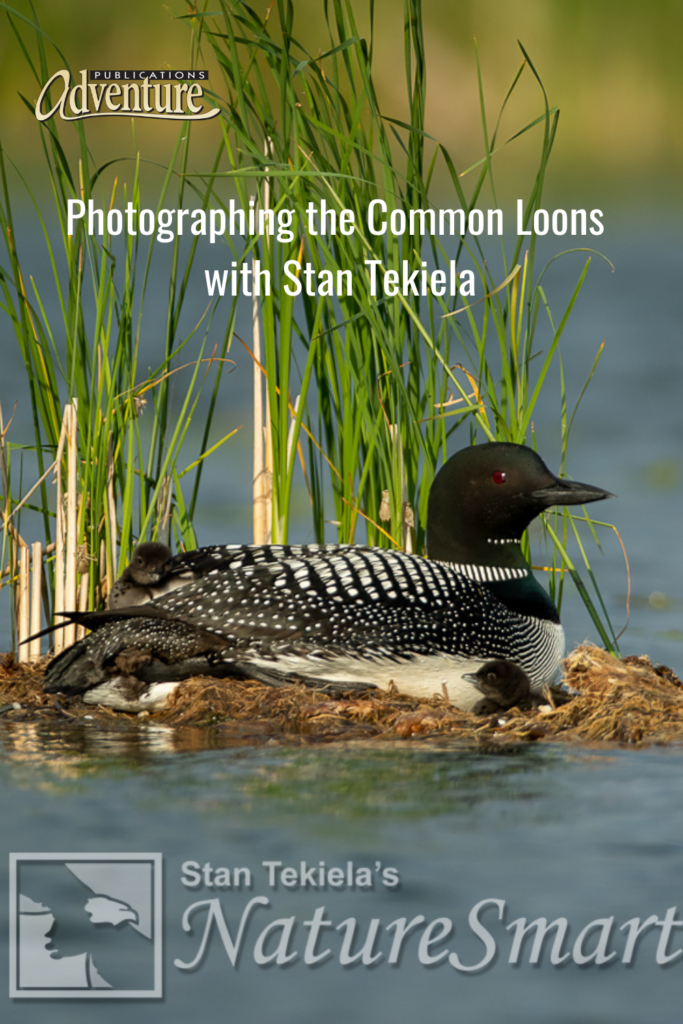
Photographing Common Loons with Stan Tekiela
Each year, photographers from around the world book time with Stan Tekiela for a Common Loon photo workshop and tour. He takes them out to photograph the Common Loons (Gavia immer) from his customized boat. Today he tells us about his latest adventure.

Every day in nature is a new and exciting adventure. Even after 40-plus years of working with wildlife in some of the most beautiful places, I still learn new things and am surprised by what I see and learn. All of this creates a sense of wonder and amazement in my mind. It also keeps me going each morning when I get up pre-dawn and head out for the day with only a handful of hours of sleep.
Each morning and evening during the season, I am out on my boat with up to five or six photographers. This means I am on the water teaching about loon behavior and helping my clients capture some amazing images of these iconic birds of the northland. It also allows me to log an unprecedented number of hours watching and studying these black-and-white beauties.
Recently I observed two things that really made me take notice. One evening I was approaching a family of loons from across the lake. I could see that one of the adults was very upset and splashing about and preforming its aggression dance. This is where the loon stands up, out of the water, holding its bill tightly down to its chest while giving a loud call. This is also called the penguin dance, or vulture stance, because of the way the loon looks while performing the display.

Through my binoculars I could see something large and black in the water. As I got closer, I still couldn’t make out what the heck was in the water that was upsetting this adult loon. It was only when I got much closer that I could see that the black object was a wind-breaker jacket that must have blown out of someone’s boat and was resting right in the territory of this loon family.
By now the adult loon was exhausted after all its efforts to drive off the floating jacket. I maneuvered my boat to go right up to the jacket and quickly pull it from the water. I immediately backed up and away from the adult loon. The second I removed the jacket from the water the adult loon calmed right down. You could almost see the relief on that loon’s face as soon as the jacket was removed from the water’s surface. This is something I have never seen happen before.
The following morning, we were back out on the water before sunrise. The plan is always to capture the sun coming up with the loons in the foreground. I found a family of loons that were busy feeding their young. Once again, I maneuvered my boat to capture some amazing sunrise images.

Taking these kinds of images is a regular part of my photo workshops/tours, so nothing seemed out of the ordinary. This kind of photography—looking directly into the sun—is challenging. You need to have your camera on some very specific settings to capture these kinds of moments. And there is no time to waste because the moment to capture the best images lasts just 10 minutes or so. Plus, it is not easy looking directly into the sun to capture these images. I wear my sunglasses to help accomplish this task. Everything worked out great, and I was thrilled that we could capture some images of the adults feeding the young loons with the rising sun in the background.
But, when I was back in the office editing the images, a surprising natural event become evident. Unknown to me, there was a partial solar eclipse going on. Of course, I couldn’t see it while it was going on because the sun was too bright. But the camera captured it perfectly. A corner of the sun had a bite taken out of it. And once again, Mother Nature amazed and surprised me.
If you enjoyed Stan’s post about Common Loons, you may enjoy one of his amazing nature books: Bald Eagles, Wild Birds, Backyard Birds: Welcomed Guests at our Gardens and Feeders, and his latest book Loons: The Iconic Waterbirds.
You can follow Stan on Facebook and Twitter, or contact him via his web page. Stan’s nationally syndicated NatureSmart Column appears in more than 25 cities spanning 5 states (Minnesota, Wisconsin, Michigan, Illinois, and Pennsylvania) and is circulated to more than 750,000 readers.
If you enjoyed this story about Common Loons, sign up for our newsletter now!


